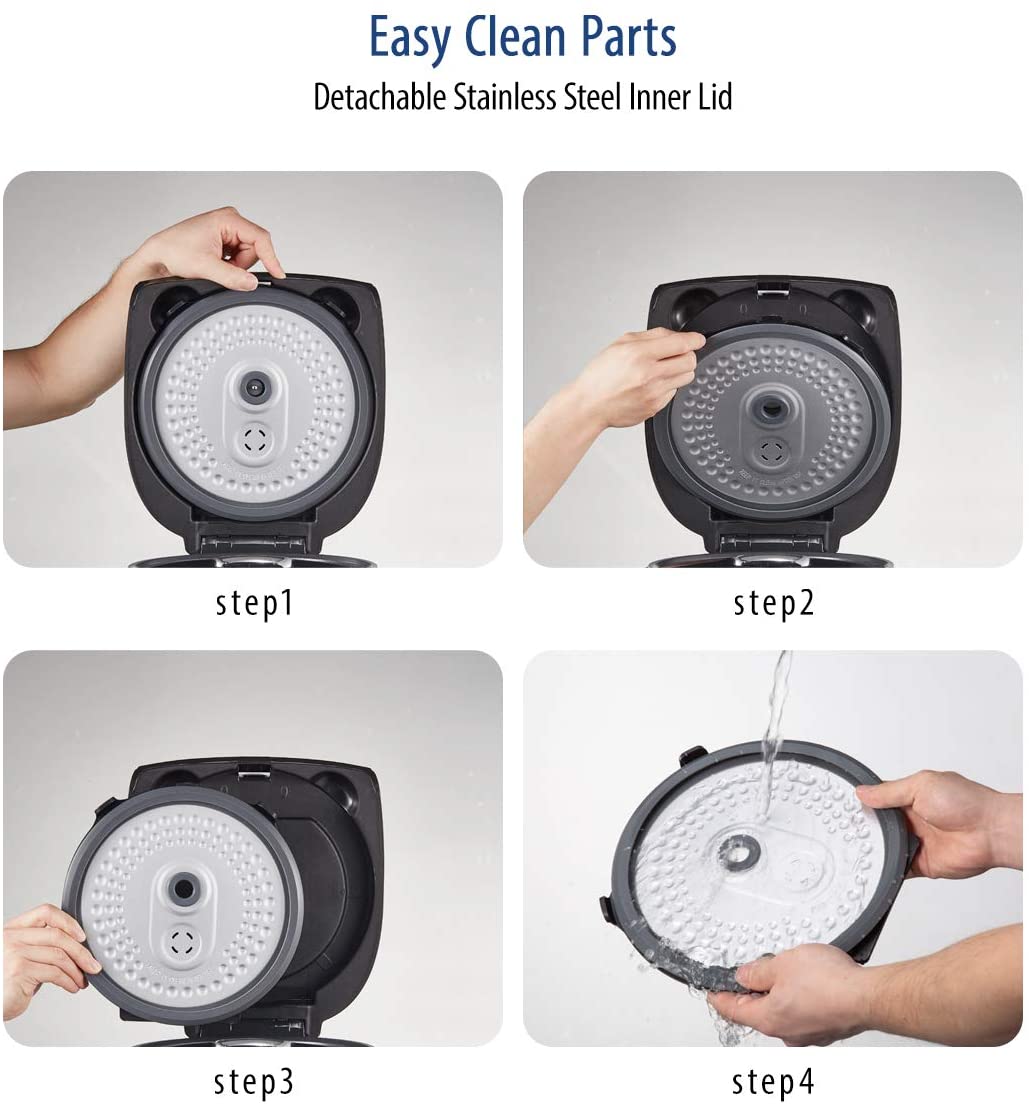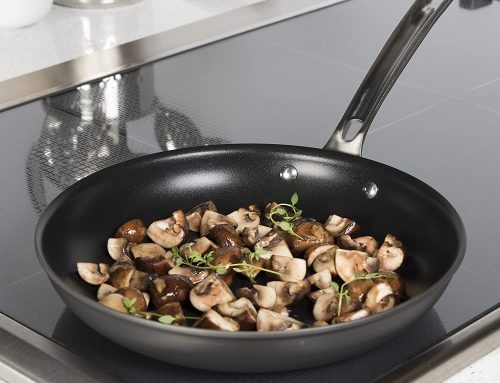A Rice cooker is one of the most important kitchen appliances. Everyone usually cleans the inner pot when cooking, with a soft cloth. In addition to the inner pot, the lid, air outlet, and other parts are the places that everyone often neglects to clean, and there are often food residues on them. In addition, the outer casing of the rice cooker should be cleaned in time, if it is stained with oil. The following tells you how to properly clean the rice cooker and the precautions for the use of the rice cooker:

How to clean a rice cooker?
1. The outer layer of the rice cooker
If there are hard-to-clean oil stains that cannot be wiped off with detergent. You can squeeze some toothpaste on a wet rag and wipe gently, and you will find that the oil stains can be easily removed, just like a new one. For the sticky rice paste dipped in rice or porridge, just wipe the surface with a rag dipped in baking soda.
2. The ventilation holes of the rice cooker
To prevent the pressure in the pot from being too high, the rice cooker will be equipped with ventilation holes. When the rice is cooked, the heat will come out from here, and there will be some food residue. We take it off, put it under the faucet, rinse it repeatedly, and wipe the edges clean. Wipe the gap around this area with a rag. If there is oil, you can use detergent, but be sure to rinse it several times before installing it.
3. Cleaning of the inner tank
Take out the inner pot of the rice cooker first. Don’t use detergent in it, just use baking soda powder directly, and pour some baking soda powder. Wipe with a sponge dipped in a little water, then rinse with water, and then wipe with a rag, Just do it.
4. Bottom of the pot
Be careful when cleaning the bottom of the pot. Do not use iron brushes, which will directly damage the bottom of the pot. First, wipe several times with a damp cloth that has been wrung out of water. After wiping, use kitchen paper to absorb water, and then wipe several times with a clean cloth.
Cleaning Note: Be sure to unplug the power supply when cleaning the rice cooker. Because its electrical part is not sealed enough, it cannot be rinsed or soaked with water. When cleaning the liner, soak it in water for a while, then wash it with a sponge or soft cloth. Hard cleaning cloths may damage the non-stick coating of the liner. After cleaning, turn on the power supply to test whether the shell is charged to ensure safe use.
5. Outer tank and inner pot bottom
It is very important to clean the outer pot and inner bottom of the rice cooker. When rice grains or dirt fall into the internal control part of the rice cooker, you use a screwdriver to remove the screws at the bottom of the rice cooker. Open the bottom cover, and take out the rice husk or the dirt inside. If there is foreign matter accumulated in a certain part of the control part, first remove it with a knife, and then scrub it with alcohol.
How to maintain a rice cooker?
1. When making rice, it is best to clean the rice, soak it in water for about 15 minutes, and then put it in the pot, which can greatly shorten the cooking time, and the cooked rice is particularly fragrant.
2. Make full use of the waste heat of the electric heating plate. When the rice soup in the rice cooker boils, turn off the power switch for 8-10 minutes, make full use of the waste heat of the electric heating plate, and then turn on the power. When the red light of the rice cooker is off and the yellow light is on, it means that the rice is cooked. At this time, you can turn off the power and use the residual heat to keep it warm for about 10 minutes.
3. Do not use the rice cooker as an electric kettle. With the same power as the rice cooker and electric kettle, the boiling water in the flask, the use of the rice cooker is much longer than that of the electric kettle.
4. Avoiding peak electricity consumption is the best way to save electricity. For a rice cooker with the same power, when the voltage is lower than 10% of its rated value, the electricity consumption time needs to be extended by about 12%.
5. Keep the inner pot and outer pot clean. If the rice cooker has been used for a long time and is not cleaned in time, there will be a layer of oxides on the bottom and outer surface of the inner pot. You can soak the inner pot of the rice cooker in water and wipe it with a rough cloth until it is clean.
6. The inner pot, lid, inner pot bottom, and electric heating plate should be in good contact. If the inner pot is deformed, that is, concave or convex, it will affect the good contact of the bottom of the inner pot. It should be corrected in time.
7. After using the rice cooker, it is best to keep it on the table to prevent ground dust from entering the bottom of the rice cooker. Do not put the rice cooker in the kitchen or a place that is easily sprayed by water, so as not to affect the safety of the rice cooker. During use, the space between the electric heating plate and the inner pot of the rice cooker should be kept clean to avoid the occurrence of water spots, rice grains, and other sundries, which will affect the cooking and may burn out the components in severe cases.
8. After purchasing a high-power rice cooker, be sure not to share a socket with other electrical appliances, as this will lead to insufficient socket capacity and cause the power cord to overheat and be dangerous.
9. After using the rice cooker, be sure to unplug it from the plug. Usually, the rice cooker has an automatic heat preservation function. After plugging in the power supply, even if there is no rice cooking, the rice cooker is still in the heat preservation state, which is a waste of electricity.
How to use the rice cooker correctly?
1. Before using the rice cooker, you should read the product instruction manual carefully to master its usage and essentials.
2. It is not advisable to use the inner pot to wash the rice directly, to avoid collision, which will cause the deformation of the bottom of the pot and affect its use.
3. Lightly put the inner pot into the shell of the rice cooker. To make the bottom of the inner pot have good contact with the electric heating plate, the inner pot should be rotated to the left and right several times after placement.
4. After inserting the power plug of the rice cooker into the main socket, you must press the switch button to make the rice cooker enter the cooking stage. After the rice is cooked, simmer for 10-15 minutes, it will be more cooked and soft, and delicious.
5. After the rice is cooked, the heat preservation indicator lights up, indicating that the rice cooker is automatically kept warm between 60-80 degrees Celsius. If insulation is not required, the power plug should be pulled out.
6. When serving rice and soup, avoid using metal spoons without unplugging the power supply. unplug the power supply, and then use plastic or wooden bamboo spoons to serve them. Be sure to use a rag when washing the inner pot. If the inner pot is stuck to the pot, wash it after soaking it in water.
7. Do not use other utensils to replace the inner pot on the electric heating plate for heating.
8. Do not disassemble the electrical components of the rice cooker at will, so as not to affect the performance and use of the rice cooker.
9. Always check whether the power socket and power cord are damaged to prevent leakage accidents.
Precautions for using a rice cooker
1. Avoid bumping
The inner pot of the rice cooker is easily deformed after being touched. After the inner pot is deformed, the bottom of the rice cooker cannot fit well with the electric heating plate. The heat is uneven during cooking. It is easy to cook unripe rice, which will also affect the transmission of thermal efficiency. Therefore, when used, it should be handled with care.
2. Avoid immersion in water
The outer shell of the inner pot and the electric heating plate should not be soaked in water. The electrical components are installed in the lower part of the pot body. They can only be wiped off with a dry cloth after cutting off the power supply.
3. Avoid sour and salty
Avoid using a rice cooker to cook foods that are too sour or too salty. Because the inner liner of the rice cooker is made of aluminum. Using it to cook foods that are too sour and salty will cause the inner liner to be eroded and easily damaged. In addition, we should be guarded when cooking rice to prevent the porridge water from overflowing into the electrical appliance. This can cause damage to electrical components.









Leave A Comment